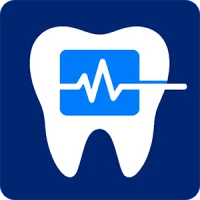
Dental Blog
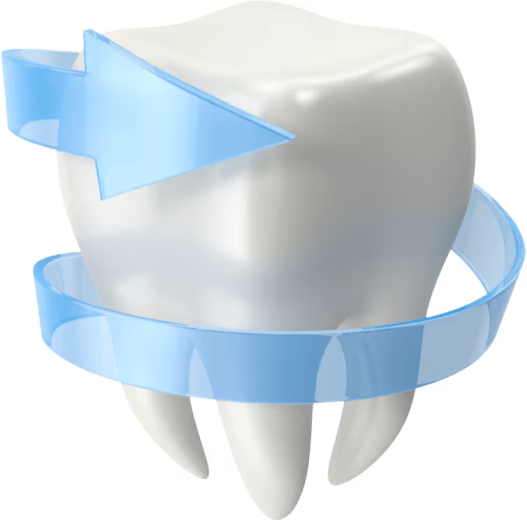

Resources for Dentists
Dive deep into helpful guides and in-depth information about:

Your Resource for Dentistry Insights
Sedation dentistry is evolving. Regulations change, compliance requirements grow, and practices need tools to stay ahead. The Sedate Dentistry Blog is here to help you learn, adapt, and succeed with resources built for dentists, oral surgeons, and office managers.

Explore Topics That Matter

Sedation Dentistry
Learn about sedation dentistry's best practices, compliance tips, and case studies.

Patient Vitals Monitoring
Device integrations, patient monitoring, and technology insights.

Patient Forms & Experience
Intake forms, digital consent, and patient-focused workflows and user experience.

Dental Practice Growth
Grow your dental practice with in depth guides, tutorials, and software reviews.
Recent Guides for Dentists

Pediatric Sedation Dentistry Near Me: What to Know Before Choosing
Finding “pediatric sedation dentistry near me” is only half the job. The real work is choosing a practice that screens carefully, monitors relentlessly, documents in real time, and sends your child home only when objective criteria are met. This guide gives you a simple, parent-friendly checklist, the questions that matter, and what strong answers sound like—plus tips to prepare your child for a calm, predictable day.
Table of Contents
Pediatric Sedation Dentistry Near Me: What to Know Before Choosing
What “pediatric sedation dentistry near me” should actually mean
The short list of sedation options you’ll hear about
How to match the option to your child
The questions that separate great practices from good ones
Red flags that mean “keep looking”
What great pediatric sedation feels like on the day of the visit
Why documentation quality matters as much as bedside manner
Technology you should want your pediatric provider to use
Understanding risks honestly (and how the team reduces them)
How to prepare your child for a calm appointment
What a parent-friendly timeline looks like
Cost and insurance: how to think about value
How to evaluate online reviews without getting misled
When IV sedation or hospital-based care is the safer choice
What to bring and how to set up home recovery
When to call after you get home
Pediatric sedation lets anxious or very young patients complete necessary dental care safely and comfortably. Your goal as a parent is not just convenience—it’s confidence. Confidence comes from a provider who explains options plainly, shows you their safety standards, and proves they follow them with live documentation and a clear discharge checklist. Use this guide to evaluate local options, ask better questions, and set your child up for a smooth visit.
What “pediatric sedation dentistry near me” should actually mean
“Near me” should point you to practices that can keep your child safe, not just close. Location matters for logistics, but screening quality, monitoring, and documentation matter most. A strong pediatric sedation practice will describe how it screens for airway risks, which sedation levels it offers, who runs the room, and how it decides when a child is ready to go home.
The short list of sedation options you’ll hear about
Providers tailor sedation to your child and the procedure.
● Nitrous oxide (laughing gas) reduces anxiety quickly and wears off when the mask is removed.
● Oral or intranasal medication helps kids relax and reduces memory of the visit; monitoring still matters.
● IV sedation (in the right setting with the right credentials) allows minute-to-minute adjustment for longer or more stimulating procedures.
● General anesthesia is reserved for specific cases and requires hospital or surgical center support.
How to match the option to your child
Picking the right approach starts with your child’s health, behavior, and the planned treatment.
● Medical status and airway: a history of snoring, enlarged tonsils, or obstructive sleep apnea (OSA) changes the plan.
● Age and cooperation: very young children and those with strong gag reflexes may benefit from medication-assisted care.
● Procedure length and stimulation: longer, louder, or surgical visits need a plan that is adjustable and well-monitored.
● Home support: a responsible adult must bring your child and supervise recovery.
For a parent-friendly safety overview, see Sedation Dentistry for Kids: Is It Safe?
The questions that separate great practices from good ones
Strong clinics are happy to answer specifics. Use this list to structure a 5–10 minute call.
Red flags that mean “keep looking”
Some answers should push you to another provider.
● Vague monitoring: “We watch closely” without specifics on what and how often.
● No clear roles: “Everyone keeps an eye on things” usually means no one owns the timer.
● Discharge by “looks ready” instead of a short checklist.
● Documentation after the fact instead of live during the visit.
● No plan for nitrous documentation beyond “used.”
What great pediatric sedation feels like on the day of the visit
Predictable structure keeps the room calm and your child comfortable.
● Check-in confirms escort, medical review, weight, and any changes since your pre-call.
● Two sets of baseline vitals set a safe starting point.
● Medication is given as planned; lights dim; TV/tablet ready; staff narrate what they’re doing.
● Local anesthesia is still used to block pain; the team tests comfort before starting work.
● Monitoring runs on a steady cadence and adds “extra entries” when the room gets busy.
● Recovery is quiet and unhurried; discharge is by checklist, not the clock.
Why documentation quality matters as much as bedside manner
Clear, live documentation proves the team delivered safe care. Strong clinics will explain that they record every medication and event in the moment—name, concentration (mg/mL), route, exact dose, time, reason for the dose, immediate response, and running totals. They’ll also show how oxygen levels, heart rate, and blood pressure appear on the chart automatically so staff aren’t retyping numbers during your child’s visit. Practices that standardize this in Sedation visit record software finish with charts that read like the room felt and are easy to review later.
Technology you should want your pediatric provider to use
Technology doesn’t replace skill, but it makes safe behavior easier.
● Digital sedation visit records keeps intake, vitals, medications, events, and discharge on one screen.
● Patient Vitals Monitor Integrations stream oxygen saturation, pulse, blood pressure, and capnography directly to the record.
● Dental sedation compliance enforces objective discharge and keeps consent and instructions up to date.
Ask directly whether the practice uses digital sedation records and device integrations; you deserve a “yes.”
Understanding risks honestly (and how the team reduces them)
All sedation carries risk. The most common concerns are slowed breathing, oxygen drops, airway obstruction from a relaxed tongue, nausea, and blood-pressure changes. Good screening reduces risk; continuous oxygen and pulse tracking provide early warning; capnography (when available) shows changes in breathing before oxygen levels fall; and objective discharge ensures kids leave when they’re truly ready.
How to prepare your child for a calm appointment
Preparation helps everyone—especially young kids.
● Review simple expectations: “You’ll breathe through a small mask and watch a show. We’ll help your tooth nap.”
● Follow fasting and medication instructions exactly as given.
● Dress in loose sleeves so the blood-pressure cuff and pulse sensor fit comfortably.
● Bring a favorite blanket or stuffed animal if your practice approves it.
● Plan a quiet rest day with supervised downtime after the visit.
Use the clinic’s written instructions; strong teams keep these updated inside their compliance system so wording is clear and consistent.
What a parent-friendly timeline looks like
This example shows the steps you should expect to hear narrated in the room.
Cost and insurance: how to think about value
Costs depend on the level of sedation, time, and setting (office vs. hospital). Insurance coverage varies by plan and diagnosis. Consider the total value: reduced cancellations, fewer appointments, and a calmer child. If your clinic shares how they standardize documentation (and avoid rework), that’s a sign of maturity and consistency.
How to evaluate online reviews without getting misled
Look for patterns that match safety and communication, not just star ratings.
● Mentions of “clear instructions,” “they watched her closely,” “calm room,” and “we felt informed.”
● Feedback on how the team handled gagging, snoring, or anxiety.
● Specifics about discharge and next-day follow-up calls.
Reviews full of generalities are less helpful than a few that describe monitoring, pacing, and communication.
When IV sedation or hospital-based care is the safer choice
Some kids are better served in a setting with deeper resources. Significant OSA, complex medical histories, very long surgical procedures, or prior sedation difficulties may point toward IV sedation with advanced credentials or to a hospital/surgicenter plan. A confident office will tell you when that’s the right move.
What to bring and how to set up home recovery
A small preparation list prevents hassles later.
● Insurance card, ID, completed forms, and a comfort item your practice allows.
● A charged phone with the clinic’s number saved.
● A clear afternoon at home with quiet activities and supervision.
● Soft, cool foods ready (yogurt, applesauce, smoothies).
● A plan to keep fingers and teeth away from numb lips and cheeks.
When to call after you get home
Call if your child has trouble breathing, persistent vomiting, severe pain not controlled by the plan you were given, unusual weakness, or anything that concerns you. Clinics expect and welcome calls—especially on sedation days.
Where to read more while you decide
If you want to understand the safety systems behind the visit, read pediatric sedation monitoring and pediatric charting articles written for teams; they’ll show you exactly what good looks like and help you ask sharper questions.
● Patient Monitoring During Pediatric Sedation: Best Practices
● Pediatric Sedation Charting: Best Practices for Accuracy
Bottom line
The best “pediatric sedation dentistry near me” combines caring people with disciplined systems. Look for clear screening, steady monitoring, live documentation, and objective discharge. Ask direct questions and expect direct answers. With the right team—and a little preparation—your child’s visit can be calm, safe, and successful.
Next Steps
Book a Free Demo to see how Sedate Dentistry’s Digital Sedation Visit Records Software can streamline and replace paper sedation visit records—saving time, money, and increasing compliance while reducing liability and improving the quality of patient records.
Ready to modernize your sedation documentation? Book a Free Demo with Sedate Dentistry today.

Stay Ahead of the Curve
Benefits of Following Our Blog
Learn compliance best practices.
Discover new sedation software features.
Get expert tips for improving patient care.
See how practices are switching from paper or competitors like Xchart.

Learn More About Sedate Dentistry?
Request a software demo today. See how we can digitalize your sedation visit records.
Simple Pricing, No Hidden Fees
No limits on Procedures or Patients (additional fees for additional offices and dentists)
Testimonials
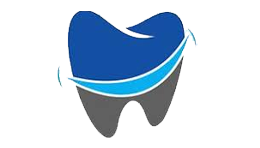
SmileRight Dentistry
Here's Sedate Dentistry Software in a nutshell. Time Saver. Money Saver. Easy to use. Amazing support. End of story.
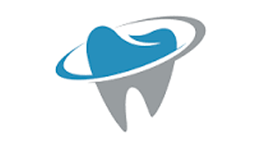
DentalClean
We learned about Sedate Dentistry from one of their other sister companies Edental. We switched from Xchart and this app works great.
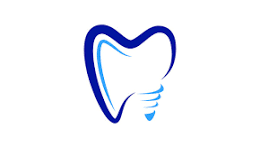
Metro Dentistry
The team at Sedate Dentistry has been amazing, especially Josh who helped integrate into our Edan X10. Much better than Xchart and a fraction of the price.
Contact Us
Contact Us
3165 West 4700 South, Suite A, Taylorsville Utah 84129



















